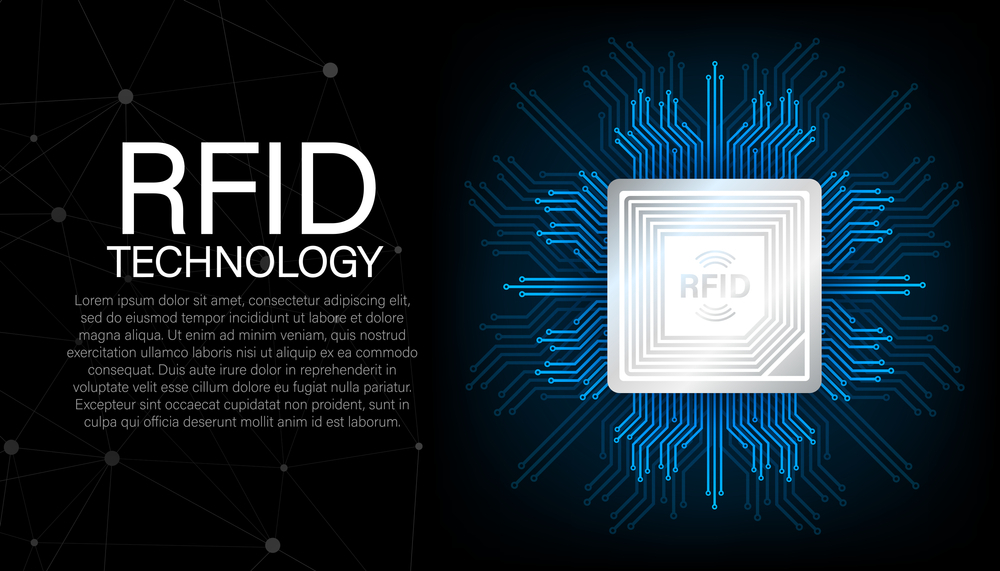Introduction
In today’s fast-paced world, managing assets efficiently is paramount for businesses across industries. To achieve this, it has emerged as game-changers, enabling organizations to monitor and control their assets with unprecedented precision. In this comprehensive article, we will delve into the world of asset tracking technologies, exploring their benefits, applications, and the key players in this dynamic field. Join us on this journey as we unravel the power of asset tracking technologies and their impact on modern businesses.
Asset Tracking Technologies: A Closer Look
It encompass a wide array of solutions designed to monitor and manage assets throughout their lifecycle. Whether it’s tracking high-value equipment in a factory, managing fleets of vehicles, or monitoring inventory in a warehouse, these technologies offer real-time visibility and data-driven insights. Below, we’ll explore some of the most prominent asset tracking technologies and their applications:

RFID (Radio Frequency Identification) Technology
RFID technology utilizes radio waves to identify and track objects equipped with RFID tags. Subsequently, these tags contain unique identifiers that can be scanned and recorded by RFID readers, enabling seamless asset monitoring. Moreover, the applications of RFID technology are diverse, ranging from supply chain management to retail inventory tracking.
Under this section, we will explore the various use cases of RFID technology, including its role in streamlining inventory management, improving asset security, and enhancing overall operational efficiency.
IoT (Internet of Things) Asset Management
The Internet of Things (IoT) has revolutionized asset tracking by connecting physical objects to the internet and enabling seamless data exchange. Consequently, IoT-based asset tracking solutions empower businesses to collect and analyze valuable asset data, leading to more informed decision-making.
Here, we will explore the role of IoT in predictive maintenance, as well as optimizing asset utilization, and fostering a proactive approach to asset management.
GPS (Global Positioning System) Tracking
GPS tracking is a location-based technology that leverages satellites to determine the real-time position of assets equipped with GPS devices. As a result, this technology is widely employed in logistics and transportation to optimize routes, monitor vehicle movements, and ensure timely deliveries.
In this part, we will discuss the advantages of GPS tracking in fleet management, in addition to its impact on reducing fuel consumption, and how it contributes to better customer service.

NFC (Near Field Communication) for Proximity Tracking
NFC is a short-range wireless technology that allows two devices to communicate when in close proximity. This technology finds applications in tracking assets within confined spaces or during proximity-based interactions.
In this segment, we will delve into the diverse applications of NFC in asset tracking, such as its role in access control systems, contactless payment, and supply chain visibility.
Barcode-Based Asset Tracking
Barcode technology has been a staple in asset tracking for years. Additionally, it involves attaching barcode labels to assets and using scanners to read and update asset information. Notably, barcode-based asset tracking is cost-effective and widely used across industries.
Under this section, we will discuss the advantages of barcode-based asset tracking, its integration with existing systems, and its role in improving inventory accuracy.

AI-Driven Asset Tracking Solutions
Artificial Intelligence (AI) is increasingly being integrated into asset tracking technologies, thereby enhancing their capabilities. Consequently, AI-driven asset tracking solutions can predict maintenance needs, optimize routes, and detect anomalies.
Here, we will explore the application of AI in asset tracking and its potential to revolutionize asset management practices.
Cloud-Based Asset Management Systems
Cloud-based asset management systems centralize asset data, making it easily accessible to authorized personnel. Additionally, these systems offer scalability, data security, and seamless integration with other business tools.
In this section, we will explore the advantages of cloud-based asset management, its role in facilitating remote asset tracking, and its potential for reducing operational costs.
Mobile Asset Tracking Apps
Mobile apps equipped with asset tracking capabilities enable real-time monitoring and management on-the-go. These apps are especially valuable for field service operations, construction projects, and remote asset tracking.
Under this heading, we will discuss the features and benefits of mobile asset tracking apps, along with some popular examples.

Blockchain for Enhanced Transparency
Blockchain technology offers a secure and transparent way to record and share asset data across a network. Moreover, it can boost transparency, traceability, and accountability in supply chains and asset-intensive industries.
This section will delve into how blockchain-based asset tracking solutions can combat counterfeiting, improve provenance tracking, and enhance data integrity.
Predictive Maintenance with Asset Tracking
Predictive maintenance leverages asset tracking technologies and data analytics to predict asset failures before they occur. This proactive approach to maintenance helps organizations save costs and prevent unplanned downtime.
Here, we will discuss the importance of predictive maintenance, the technologies involved, and its impact on asset reliability.
Asset Tracking Technologies in Healthcare
It play a vital role in the healthcare industry, where the accurate tracking of medical equipment and supplies is critical. In particular, RFID, IoT, and barcode-based systems are extensively used to enhance patient care and streamline healthcare operations.
This segment will shed light on asset tracking applications in hospitals, clinics, and medical supply chains.
Supply Chain Optimization with Asset Tracking
Effective supply chain management relies on accurate asset tracking to ensure timely deliveries and minimize disruptions. Asset tracking technologies contribute to supply chain optimization, enhancing overall efficiency and customer satisfaction.
Under this heading, we will explore how asset tracking streamlines supply chain processes, minimizes inventory errors, and improves demand forecasting.
Security and Asset Tracking
Asset tracking technologies bolster security measures by providing real-time data on asset location and status. From preventing theft to ensuring compliance, asset tracking enhances overall security in various industries.
This section will delve into how it enhance security protocols and minimize the risk of asset loss.
Asset Tracking for Construction Industry
The construction sector benefits significantly from asset tracking technologies. Tracking equipment and materials on construction sites helps in managing resources, reducing downtime, and optimizing project timelines.
In this part, we will discuss how asset tracking technologies address the unique challenges faced by the construction industry.
Environmental Impact
With the advancement of technology, the environmental impact becomes a crucial consideration. In this regard, asset tracking technologies can significantly contribute to sustainability efforts through efficient resource allocation and reduced waste.
Here, we will analyze how it can align with sustainability goals and promote eco-friendly practices.
Challenges and Considerations in Implementing Asset Tracking Technologies
While it offer numerous benefits, their successful implementation requires addressing certain challenges and considerations. From cost implications to data privacy concerns, organizations must be prepared for the journey ahead.
This section will discuss the potential hurdles and best practices for adopting asset tracking technologies.
The Future of Asset Tracking Technologies
The landscape of asset tracking technologies is continually evolving. Looking ahead, we can expect further innovations and advancements that will redefine asset management across industries.
Under this heading, we will explore the exciting possibilities and potential breakthroughs on the horizon.
Key Players in the Asset Tracking Industry
Numerous companies play pivotal roles in developing and providing asset tracking solutions. Moreover, from established giants to innovative startups, the asset tracking industry is a diverse and competitive space.
In this section, we will showcase some key players and their contributions to the evolution of asset tracking technologies.
Best Practices for Successful Asset Tracking Implementation
To maximize the benefits of it, organizations must adopt best practices during the implementation process. From setting clear objectives to training employees, each step is crucial to achieving success.
Here, we will outline essential best practices for organizations embarking on their asset tracking journey.
ROI (Return on Investment)
Investing in it involves costs, but the returns can be substantial. Understanding the ROI of these technologies is essential for decision-makers evaluating their implementation.
In this part, we will delve into how organizations can calculate and optimize the ROI of asset tracking solutions.

Asset Tracking Technologies for Personal Use
These are not limited to businesses; they also find applications in personal life. From finding lost items to tracking pets, these technologies offer convenience and peace of mind to individuals.
Under this heading, we will explore how asset tracking technologies benefit individuals in their daily lives.
Data Analytics and Asset Tracking
Data analytics play a crucial role in extracting actionable insights from asset tracking data. Moreover, by leveraging advanced analytics tools, organizations can make informed decisions and optimize asset performance.
This section will discuss the significance of data analytics in asset tracking and its potential for enhancing operational efficiency.
Common Misconceptions about Asset Tracking Technologies
As with any emerging technology, asset tracking solutions are often subject to misconceptions and myths. However, clarifying these misconceptions is vital for a clear understanding of their true value.
Here, we will debunk common myths surrounding asset tracking technologies.
Security and Privacy in Asset Tracking
Asset tracking involves collecting and storing sensitive data. Therefore, ensuring the security and privacy of this data is of utmost importance to build trust with users and stakeholders.
Under this heading, we will discuss the security measures and privacy safeguards implemented in asset tracking technologies.
Making Supply Chains Resilient
Recent disruptions have highlighted the importance of supply chain resilience. Consequently, it can bolster supply chain resilience, enabling organizations to navigate unforeseen challenges.
This section will explore how asset tracking technologies contribute to building robust and agile supply chains.
Conclusion
It have become indispensable tools for businesses seeking to optimize their operations and gain a competitive edge in the modern era. Whether it’s enhancing supply chain visibility, improving asset security, or predicting maintenance needs, these technologies offer a myriad of benefits. By embracing asset tracking technologies, organizations can streamline their processes, reduce costs, and make data-driven decisions to drive success.
In a world where efficiency and visibility are paramount, it pave the way for a brighter and more connected future. So, take the leap and explore the possibilities that these innovative technologies offer for your business.
FAQs (Frequently Asked Questions)
It offer real-time visibility and data-driven insights, streamlining asset management processes, optimizing routes, and facilitating proactive maintenance, all of which enhance overall efficiency.
A wide range of industries benefit from it, such as logistics, healthcare, construction, manufacturing, retail, and transportation, among others.
Indeed, It can lead to reduced operational costs by optimizing asset utilization, minimizing downtime, and preventing asset theft or loss.
Certainly, It can contribute to environmental sustainability by promoting efficient resource allocation and reducing waste in supply chain and asset management processes.
Organizations can overcome challenges by setting clear objectives, as well as ensuring employee training, addressing data privacy concerns, and selecting suitable technology partners.
The future of asset tracking technologies is promising, with ongoing advancements in AI, IoT, and data analytics, which will further revolutionize asset management practices.
For More blogs visit https://techyshack.com/
